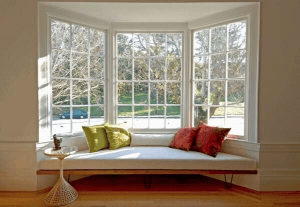Choosing flooring for your home is a significant decision. Floors have a direct impact on your lifestyle as you can do yoga on them, host a party, cook food, and your kids play and run around on your home’s flooring. You want your flooring to be functional, easy to maintain, and blend in with the overall home decor.
In this blogpost, we put together a few things to bear in mind when choosing a flooring for a new build or when you decide that your flooring needs a makeover.
Welcome.
Tips for choosing flooring for your home
Since the selection of the flooring is such a vital activity in setting up a new home, we figured that it would be really helpful to put together a guide on how to go about finalizing this important item on a new home checklist. Let’s dive in.
- Space
The first thing to consider is the room/s in which the flooring is going to be laid. The size and shape can play an important role in making the right choice, as can the way the room is lit. Flooring works in much the same way as wall coverings and paint in this regard. Light colours will help make small rooms feel more spacious, while darker accents can bring warmth if needed.
It’s a good idea to get some samples from your local flooring supplier and lay them out in the room that you are thinking of sprucing up. Seeing them in place can give you a greater sense of how they’ll blend in with the room and its furnishings. It’ll also give you the opportunity to see how your new flooring will look at different times of the day, too.
- Style
While we are thinking about how the flooring will fit with the existing surroundings, it’s a good idea to talk about the style of flooring that you opt for. It can be easy to get carried away when in a showroom or browsing online. One can often forget the simple fact that the flooring we choose needs to sit well with what we already have in our home.
Selecting the right style of flooring for your property is largely going to be down to personal choice, but ensuring that it fits with existing items is definitely something that you’ll need to keep in mind when narrowing down your selection.
- Practicality
Another important consideration is practicality. Think about the amount of use that your flooring will get and the type of activities that take place in that particular room. Is it likely to see heavy footfall, such as a hallway, or will the room only be used on an occasional basis? Maybe a spare room, for example?
What goes on in the room is also something you’ll have to bear in mind. Kitchens will frequently encounter spills and stains, so you’ll need something that is both hardy and easy to clean in areas such as this. Similarly, bathrooms need to have flooring that will take the constant moisture levels associated with them.
- Type
Now that we know a little bit more about the style, space and practicality of the room in question, we can start to look at the different types of flooring options available. There is an abundance of choice available these days, but for most people’s homes there will be five main types: tiles, vinyl, laminate, wood and carpet.
The type that you select will be influenced by the points that we have addressed above, but it will also come down to your own personal preferences a lot of the time, too. Once you have made a decision on the type of flooring, you will then need to select the sub-type. For example, if you like the idea of wooden flooring in your home, do you want solid wood flooring, hardwood flooring, old-fashioned boards or, maybe, imitation wood-effect vinyl?
Then, there’s the shape. Some people prefer uniform squares, while others think that long, thin planks are the way to go. No one said this was going to be easy!
- Budget
As with everything else in life these days, flooring can be relatively inexpensive or eye-wateringly, jaw-droppingly dear. Knowing your budget is essential, but sticking to it is probably more so. Work out what you have to spend and stay within your means.
Marketing materials and friendly showroom staff are all there to tear you and your hard-earned cash apart. Stick to your guns.
- Professional installation or Do It Yourself?
You may decide to save yourself a bit of cash by having a go at laying the flooring yourself. This is all well and good if you are a seasoned DIYer, but probably not the best of ideas if things are constantly sliding off of the last shelf you put up. While it may seem like a simple job, laying flooring is actually anything but. However, if you do decide to give it a shot yourself, choosing the right type of flooring will help you make a successful job of it.
Engineered and laminate flooring are generally considered the easiest types for the amateur to work with, so try and stick to those if you can. You will need certain tools, however, so it’s worth doing a few sums to work out exactly how much you’ll be saving by doing it yourself. Don’t forget to factor in the cost of your own time and the potential headaches you may encounter if you decide to go down this route. Check out professional home builders here.
- Maintenance
The last thing on our list is maintenance. Are you prepared to lavish your new floor with plenty of TLC, or are you more likely to treat the upkeep as a chore? It’s an important consideration to keep in mind before you buy, as the type of flooring you choose will greatly influence the amount of work that follows.
Resilient types, such as sheet vinyl, vinyl tiles and laminate flooring, require very little maintenance. A quick mop round every now and then will keep them looking good as new. Sure, you’ll still have to address any spillages there and then to prevent stains from setting in, but that’s only to be expected. Other than that, these floors will stay in good shape with the minimum amount of effort.
Wooden floors, on the other hand, can be extremely hard work to maintain. You may see manufacturers advertising low maintenance as a selling point, but it’s worth treating this with a huge pinch of salt.
Wooden floors are hard to beat when they are looking at their very best, but if they are left to their own devices they can quickly become very shabby indeed. Using rugs in areas of heavy footfall can help.
Check out our next post to view flooring types and flooring combination that best suites your style.



